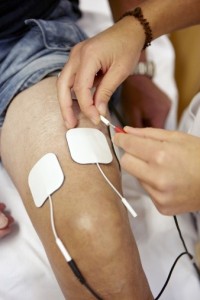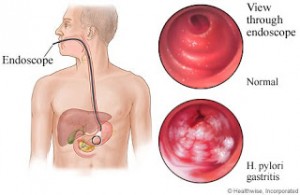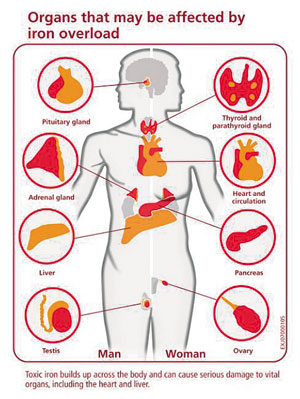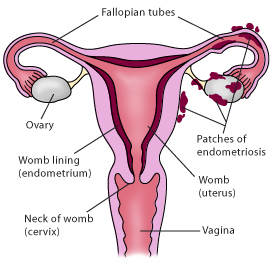I am discussing here that electro-acupuncture is twice as effective as conventional acupuncture. Imagine that you had lower back pain and your doctor said that physically everything was OK. Would you consider traditional Chinese acupuncture? According to Ref. 1 chances are that 70% of patients with back pain will get better with a few visits to an acupuncturist. In 1972 Dr. Ulett’s laboratory at the University of Missouri succeeded in getting the first NIH research grant for the study of acupuncture in the US. During these studies they found remarkable facts, the most important perhaps that electrical stimulation of acupuncture needles resulted in a doubling of the effectiveness of traditional Chinese acupuncture. After extensive research Dr. Ulett stated: ”The ancient practice of traditional Chinese acupuncture is now obsolete” (Ref.1). The much simpler, but more effective electro-acupuncture using electrical skin pads instead of needles replaced traditional Chinese acupuncture.
The science of electro-acupuncture
In 1958 news came from China that they were doing major surgeries with patients staying awake and pain free only with the use of electro-acupuncture. In other words no chemical anesthesia was necessary to make patients comfortable. Professor Ji-Sheng Han from the Beijing Medical University observed that only electrical stimulation was powerful enough to produce the pain relief that was necessary to allow general surgery. Dr. Han conducted systematic experiments to study the phenomenon of electro-acupuncture and published this in Ref. 2. One of the experiments consisted of two rabbits. Electro-acupuncture anesthetized the donor rabbit. The vet removed spinal fluid from the first rabbit and transferred it into the second rabbit (the recipient rabbit) that did not receive further treatments.
The second rabbit was pain free and the vet performed surgery
The injection of spinal fluid made the second rabbit pain free to the point where the vet could performed surgery on it without pain. Other researchers such as Dr. Pomeranz found that the brain released endorphins in response to electro-acupuncture, powerful morphine-like substances. It was the endorphins that were responsible for making the recipient rabbit of Dr. Han’s experiment pain free. Other experiments of Dr. Pomeranz showed that naloxone, a morphine and endorphin blocker also blocked the analgesic effect previously found by transferring spinal fluid. These lines of experiments also explain why some patients did not respond to electro-acupuncture, as they have a deficiency in the pain control system of their brain lacking endorphin release. Dr. Han did 30 years of experimentation and also observed patients very closely.
Placebo effect investigated by Dr. Han
Dr. Han also investigated the placebo effect and found that this can explain about 30% of healing. However, the remainder of the 70 to 75% response to electro-acupuncture in his opinion was due to the procedure. He was able to explain that traditional Chinese acupuncture points were merely spots on the body where electric currents penetrate the skin easier. When internal nerves pick up the electrical signals the also transmit to the spinal cord and to the brain. The electrical impulses then switch over in the brain and spinal cord to nerves that go to other areas of the body. This explains how electrical impulses can travel from conducting polymer pads applied over acupuncture points, release neuropeptides in the brain and help the body to heal. Functional MRI studies confirmed that certain frequencies stimulate the brain through electro-acupuncture or traditional Chinese acupuncture to give pain relief.
Electro-acupuncture produces stronger signals in the brain
These types of studies have also shown that electro-acupuncture produces stronger signals in the brain than traditional Chinese acupuncture.
Beside pain relief many other applications exist for electro-acupuncture. Addiction medicine makes use of electro-acupuncture in weaning people from morphine or heroine etc. The health professional can use this method to treat psychiatric illness, particularly depression. It is useful in relieving nausea and vomiting due to chemotherapy with cancer treatments or associated with pregnancy without affecting the pregnancy. However, this may also be useful as an adjunct to treating high blood pressure and cardiovascular disease.
One area where clinical hypnosis and electro-acupuncture have a closely relationship is called “conditioned healing” (Ref.1). For instance, with posttraumatic stress disorder (PTSD) in soldiers who returned from battle or in rape victims researchers showed that hypnotherapy treatment while using electro-acupuncture for 30 minutes at the same time can be useful in alleviating the symptoms these patients experience.
A few case studies using electro-acupuncture
Here are a few case studies that illustrate the use of electro-acupuncture with regard to patients (modified Ref.1). A treatment consists of a 30-minute session where the patient is either sitting or resting comfortably on an examining table. Treatments initially are often given twice per week until the pain is only about 50% of the original pain (severity of pain is scored on a 0 to 10 scale in the beginning). From that point on the visits are reduced to weekly sessions. Most clinical problems require three to 12 sessions. If the pain goes away, but returns after a few weeks, repeat sessions can be scheduled, which often lead to pain relief in a shorter time interval than was the case with the original problem. Chronic problems can be treated on an ongoing basis once per month, if there was a clinical response, but the pain reoccurs.
A 53-year-old painter with left shoulder pain
A 53-year-old painter with left shoulder pain, which radiated into the left chest, had problems with painting above his head. His physician did heart studies, but everything was OK. He was told that this was due to a muscle spasm in the shoulder muscles. One electrode was placed over the hoku point (also called LI-4 acupuncture point), which is located over the first interosseous muscle between the thumb and index finger, the other electrode over the area of pain in the left shoulder. Only seven treatments, twice per week for 2 weeks were given, then treatments with weekly intervals were administered. This approach cured his shoulder problems, and he could return to paining.
A 39-year-old woman with lower back pain
A 39-year-old woman came to the office complaining of lower back pain, which radiated into her right leg to the knee area. After tests she was told that she had spinal stenosis with sciatica (irritation of the sciatic nerve). No surgery could be done for this. She was given twelve electro-acupuncture treatments with one electrode placed below her right knee (ST-36 acupuncture point) and another electrode placed over her right lower back over one of the BL acupuncture points. She was almost pain free for about two weeks, but the pain came back after the last treatment. Since then she has been getting ongoing monthly electro-acupuncture visits with about 80% pain relief. Keep in mind that spinal stenosis is a condition for which regular medicine has nothing to offer other than symptomatic pain medication, which she did not want.
A 30-year-old schoolteacher with anxiety attacks
A 30-year-old schoolteacher suffered from anxiety attacks and agoraphobia (fear of open spaces) for several years. The therapist used conditioning with electro acupuncture to treat this woman. She received a series of treatments with electro-acupuncture over both interosseous muscles (hoku acupuncture point or LI-4) for 30 minutes during which time she was also listening to a relaxation tape with music in the background and suggestions for self-hypnosis. The physician taught her how to do self-imagery at home. Subsequently she did this for 10 minutes two or three times per day. Several weeks later she was able to control her anxiety attacks and overcome her fear of open spaces. In the beginning she rated her symptoms as 8 to 10 in severity on a scale from 0 to 10. At the end of the sessions, she only had occasional symptoms with a 1 to 2 rating on this scale.
A 50-year-old man with cluster headaches
A 50-year-old man with cluster headaches who had been investigated extensively by a neurologist without any other underlying cause was treated with electro-acupuncture. The electrodes were placed on acupuncture points of the head. Within only 4 sessions most of the headaches were gone. After 8 sessions he had no more headaches. However, a few weeks later his cluster headaches returned, but with ongoing monthly treatments he is able to prevent them from recurring. He did not like the side effects of all the pain medications, so he rather goes for his monthly booster electro-acupuncture treatments.
Take-home message regarding electro-acupuncture
Many people never considered traditional Chinese acupuncture for fear of needles. However, extensive research by Dr. Han and Dr. Ulett showed that electro-acupuncture with electrically conducting polymer pads or with EKG pads will replace the acupuncture needles. Not only is this method needle free, but also the weak electrical impulses that are used with electro-acupuncture treatment double the effectiveness of the older acupuncture method.
Many acupuncturists use both methods of acupuncture, but Dr. Ulett who used traditional acupuncture in the past has completely abandoned it and uses electro-acupuncture with the HANS machine instead. It is a complementary medical treatment, which has been authorized by the FDA.
More on pain conditions: http://nethealthbook.com/neurology-neurological-disease/pain/
References
1: George A. Ulett, M.D., Ph.D. and SongPing Han, B.M., Ph.D.: “The Biology of Acupuncture”, copyright 2002, Warren H. Green Inc., Saint Louis, Missouri, 63132 USA
2. J.S. Han: “The Neurochemical Basis of Pain Relief by Acupuncture”. Vol. 2. Hu Bei Science and Technology Press, Beijing, 1998 (784 pages).










